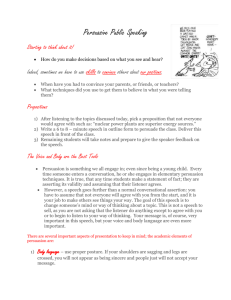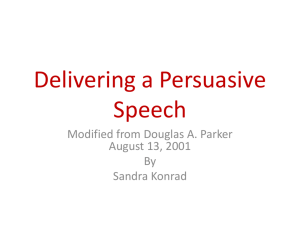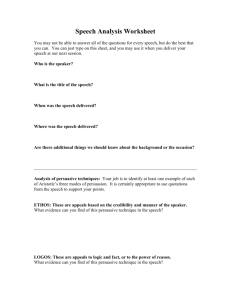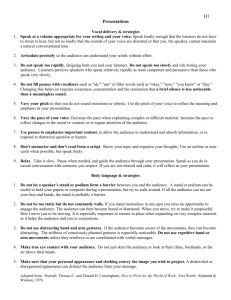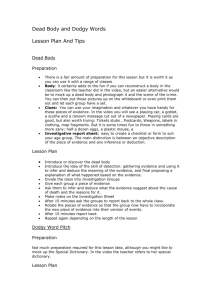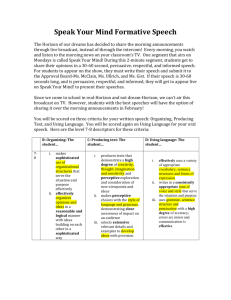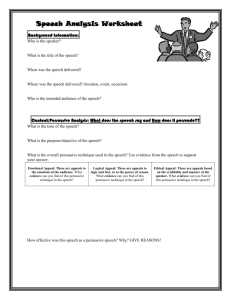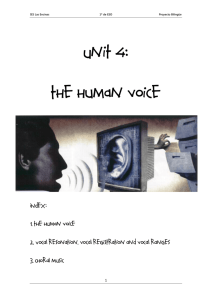tips for delivering a persuasive speech
advertisement
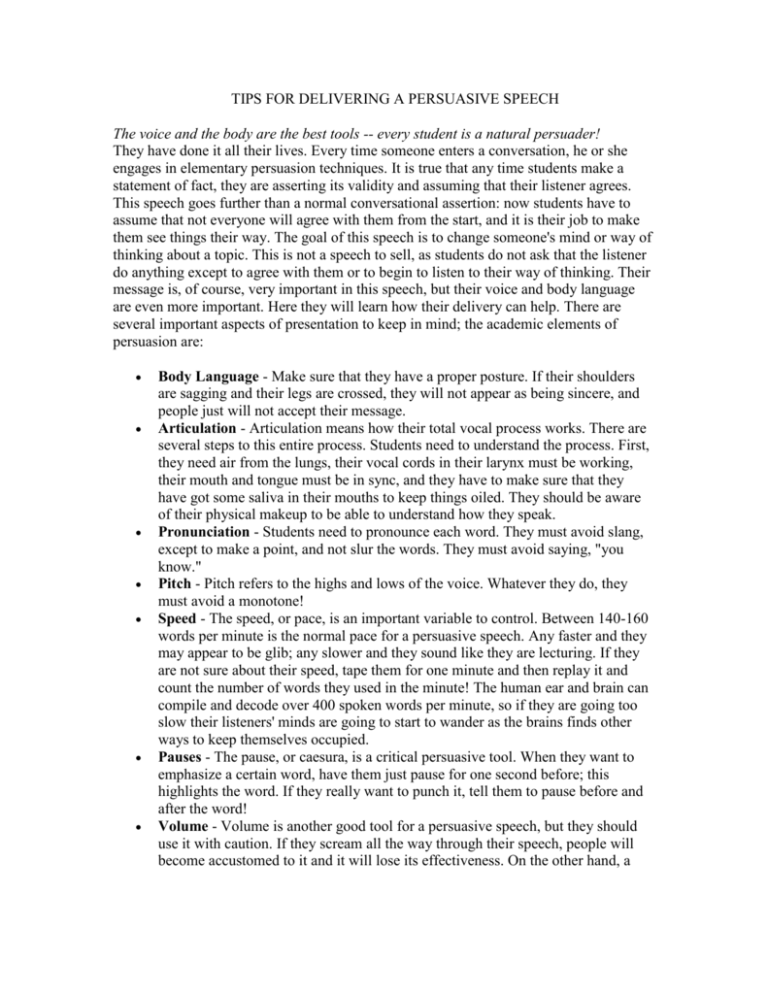
TIPS FOR DELIVERING A PERSUASIVE SPEECH The voice and the body are the best tools -- every student is a natural persuader! They have done it all their lives. Every time someone enters a conversation, he or she engages in elementary persuasion techniques. It is true that any time students make a statement of fact, they are asserting its validity and assuming that their listener agrees. This speech goes further than a normal conversational assertion: now students have to assume that not everyone will agree with them from the start, and it is their job to make them see things their way. The goal of this speech is to change someone's mind or way of thinking about a topic. This is not a speech to sell, as students do not ask that the listener do anything except to agree with them or to begin to listen to their way of thinking. Their message is, of course, very important in this speech, but their voice and body language are even more important. Here they will learn how their delivery can help. There are several important aspects of presentation to keep in mind; the academic elements of persuasion are: Body Language - Make sure that they have a proper posture. If their shoulders are sagging and their legs are crossed, they will not appear as being sincere, and people just will not accept their message. Articulation - Articulation means how their total vocal process works. There are several steps to this entire process. Students need to understand the process. First, they need air from the lungs, their vocal cords in their larynx must be working, their mouth and tongue must be in sync, and they have to make sure that they have got some saliva in their mouths to keep things oiled. They should be aware of their physical makeup to be able to understand how they speak. Pronunciation - Students need to pronounce each word. They must avoid slang, except to make a point, and not slur the words. They must avoid saying, "you know." Pitch - Pitch refers to the highs and lows of the voice. Whatever they do, they must avoid a monotone! Speed - The speed, or pace, is an important variable to control. Between 140-160 words per minute is the normal pace for a persuasive speech. Any faster and they may appear to be glib; any slower and they sound like they are lecturing. If they are not sure about their speed, tape them for one minute and then replay it and count the number of words they used in the minute! The human ear and brain can compile and decode over 400 spoken words per minute, so if they are going too slow their listeners' minds are going to start to wander as the brains finds other ways to keep themselves occupied. Pauses - The pause, or caesura, is a critical persuasive tool. When they want to emphasize a certain word, have them just pause for one second before; this highlights the word. If they really want to punch it, tell them to pause before and after the word! Volume - Volume is another good tool for a persuasive speech, but they should use it with caution. If they scream all the way through their speech, people will become accustomed to it and it will lose its effectiveness. On the other hand, a few well-timed shouts can liven up the speech! They must try to "project" or throw their voice out over the entire class - or speak to the last row. Quality - Quality of voice is gauged by the overall impact that their voice has on their listeners. Quality of voice is the net caliber of their voice, its character and attributes. They must try to keep the vocal quality high; it is what separates their voices from everyone else's. Variance - Variance of vocal elements is the most important consideration of all! One of the most persuasive speakers in modern history was Winston Churchill. One of his most remarkable qualities was his ability to vary the elements of his voice. He would start with a slow, laconic voice and then switch gears to a more rapid pace. People were light-headed after listening to him! Even if they have no desire to run for political office, students can still use the tools of variance. Have them try to change their pitch, volume, and speed at least once every 30 seconds, if only for just one word. Never let them go more than one paragraph without a vocal variance. This keeps the class locked into the speech, if for no other reason than it sounds interesting! Let the students' words speak for themselves; reflect their nature through their voices. If they use the word "strangle," have them say it with a hint of menace in their voices. If they say the word "heave," let the class feel the onomatopoeic force behind it. If they say the word "bulldozer," make it sound like a titan earthmover, not like a baby with a shovel. The Strategy: Appear Rational When students are trying to convince someone of something, they must first establish their credibility, or in other words, they must sell themselves before they sell their message. If people feel that they are not being reasonable or rational, they do not stand a chance. They must be committed to the ideals and goals of their speech and what they are saying. They should not use words such as "maybe" or "might"- the should use positive words such as "will" and "must." Students must portray themselves as the authority figures in this speech, so they had better supply enough information to prove their points so that they can seem knowledgeable, and they had better know their material cold. People can usually spot someone who is trying to "wing" a speech. They should also appear to be truthful - even when they are really stretching a point. If they do not appear to be earnest, even if their message is the 100% truth, people will doubt their word and tune out their speech. Lastly, they must not be afraid to show a little emotion - this is not a sterile or static speech. Students' bodies and voices must match the tone of their words. If their language is strong, they must present a physical force to go along with their deliveries.
